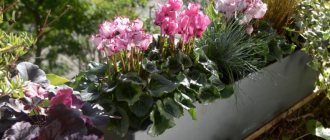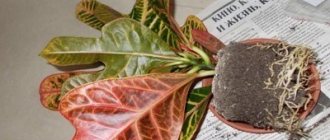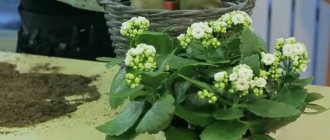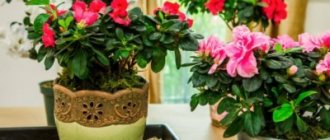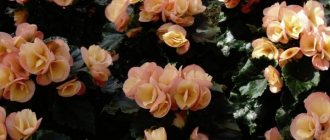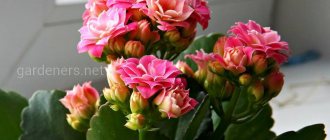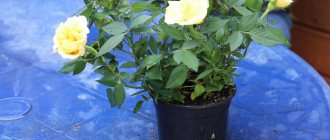A genus of herbaceous plants such as tillandsia (Tillandsia) is quite interesting and popular in home gardening. It is directly related to the bromeliad family. This genus includes approximately 500 plant species. In the wild, they can be found in subtropical and tropical areas of South and Central America. Such plants prefer to grow in coastal areas, in damp forests, and also on mountain slopes, where there is the required amount of precipitation.
Tillandsia has long been very popular among both amateur gardeners and professional florists. The fact is that in this genus there are plants of bizarre and very spectacular shapes, as well as colors. So, there are plants that look like a ball of thread, a silver beard, a bunch of feathers, and also spikelets of cereals.
Tillandsias grow as epiphytes. For their placement, snags or very loose soil, which consists of moss and tree bark, are suitable. The root system of this genus of plants plays a fixing role, so with the help of it they are attached to the bark of a tree or driftwood. They receive the moisture necessary for normal growth and development, as well as all nutrients, from the air. In this regard, it is so important to provide the plant with high air humidity.
Tillandsias are almost impossible to describe, as their appearance is so varied.
However, all these plants are combined into 2 groups:
Tillandsias, green or potted
They look like familiar plants grown indoors. Their leaves are collected in a rosette, and they can be elongated triangular or linear. Under natural conditions, they prefer to grow in the lower tier of the forest on the ground surface or on fallen trees. Grows in shady places. These plants are popular due to their unusual spike-shaped inflorescences.
The most popular tillandsias, which are grown indoors, have inflorescences in the form of a two-row spike. There are complex as well as simple inflorescences, consisting of several or one ear, which can be loose or very dense. Most often, stipules are arranged in a tile or spiral pattern. Gray tillandsias have a reduced inflorescence and only one flower is clearly visible.
Tillandsia cyanea Pink quill plant
Lighting for Tillandsia
Light is the most important thing when growing any plant. Tillandsias are no exception.
Direct sunlight should be avoided as it may be harmful. These plants thrive on kitchen or bathroom windowsills that receive indirect light. They also love a humid environment.
Most Tillandsia are naturally exposed to bright light. Since they are epiphytic and grow on other plants or trees. They may get some light, but it should be bright, indirect light.
Tillandsidia is best placed on an eastern window. This provides morning sun that is mild enough to keep the tillandsia from burning.
Place your plants within 10-15 cm from the window, but so that they do not touch the window. The farther you are from the window, the intensity of the light will sharply decrease, and this will negatively affect the growth of plants.
The north side is suitable for growing, provided there are no large obstacles such as trees outside.
On west and south facing windows, many tillandsias will burn because the sun is too strong. In these cases, you may need to reduce the intensity of the sun by using sheer curtains or blinds.
Caring for tillandsia at home
To understand what species a particular tillandsia belongs to, you need to pay attention to how it is sold. Thus, terrestrial species are sold in pots, the leaves of which are only partially covered with scales or are completely green. In the wild, such plants prefer to grow on the floor of tropical forests, as well as on organic debris. They are often grown in pots filled with a special substrate that has a loose structure. Many gardeners grow them in florariums or bottles. Atmospheric tillandsias with grayish foliage do not need soil to grow. And you can purchase such plants in the form of a decorative composition, in which they are attached to a piece of bark, part of a tree trunk, or to a stone.
Temperature
They love warmth very much. So, in the summer it feels quite good at room temperature, and in the winter it requires a temperature of 18 to 21 degrees. There are many species that grow normally at 12–14 degrees. Experts advise making sure that the daytime temperature is slightly higher than the nighttime temperature. So, in the warm season, the night temperature should be approximately 15–16 degrees. Try to protect the plant from sudden changes in temperature, as well as cold drafts.
Gray tillandsias are not as heat-loving. In winter, it is recommended to keep them at a temperature of 14 to 18 degrees. This is very important to take into account from October to the last days of January, since at this time there is a significant decrease in illumination.
Illumination
Gray tillandsias, which have grayish, hard leaves, need sunlight. However, they need the light of the evening or morning sun. In this regard, it is recommended to place them on the window sill of a window located in the northwestern or eastern part of the room. Species having grayish-green or green leaves prefer rati in slightly shaded places. So, they need a well-lit place that is not exposed to direct sunlight. They prefer diffused light.
The fact is that in tropical forests the sun is quite bright and plants, even at the lowest level, receive quite a large amount of light. In the autumn-winter period, it is recommended to move the plant to a more illuminated place, for example, the windowsill of a western or south-eastern window is suitable for this.
Humidity
In order for tillandsia to grow and develop normally, it needs high air humidity (from 65 to 85 percent, but not less than 60 percent). For spraying, use exclusively lukewarm and soft water. Since this plant takes moisture directly from the air, high humidity should be provided. In winter, when the air in the room becomes too dry due to heating devices, it is recommended to place tillandsia in a special florarium, where it will be easier for it to provide the necessary humidity.
How to water
Any type of such plant must be watered by completely immersing the plant in warm water or by generously spraying. So, in the warm season, this procedure is carried out once a day, and in autumn and spring a little less often. In winter, how often Tillandsia should be watered directly depends on the air temperature. So, if the room is warm and there is good lighting, then watering is carried out once a day, and in a cool room it is necessary to water less often.
Curling of the leaves along the central vein into a tube indicates that the plant lacks moisture and should be immersed in water for at least 3 or 4 hours (the water should be at room temperature).
Make sure that when watering, liquid does not stagnate in the center of the outlet. It should either completely evaporate after 2 hours or leak out.
It is necessary to water with soft, slightly acidic water (pH approximately 6.5), which does not contain chlorine. So, boiled, rain or melt water is excellent for this.
Top dressing
These are slow growing plants and do not need much fertilizer. Rosette species during intensive growth are fed once every 4 weeks, using liquid fertilizers for bromileaceae. Those atmospheric species that grow on bark are practically not fertilized, since the slowly decomposing bark provides them with nutrients.
You cannot use conventional fertilizers for fertilizing. So, a large amount of nitrogen can destroy tillandsia. And also you cannot use organic matter, for example: humus, urea or mullein infusion (even in minimal doses).
Fertilizing is carried out as follows: the required dose of fertilizer is dissolved in the irrigation liquid through immersion or spraying.
A large number of tillandsias are capable of purifying the air from harmful substances, which, when absorbed and decomposing, provide the plant with the necessary microelements.
Replanting Tillandsia
The newly acquired plant needs to be replanted. However, if it already has a peduncle, then this should not be done, since at the end of flowering the mother plant dies, giving rise to offspring.
In the store, the plant can be planted in a substrate, or rather in a pot filled with peat. It can also be sold fixed to the surface of the bark without a substrate.
Green species in the wild prefer to grow not on soil, but on mossy stones, snags or tree trunks. Therefore, for replanting, large pieces of bark (1–2 centimeters) or a mixture consisting of akadama (clay granules used for growing bonsai) and bark are used. Seramis granulate can also be used. You can also add river pebbles and coconut fiber to the mixture. In plain soil the plant rots. The pot is used in very small sizes, and the protruding roots can be trimmed.
Atmospheric views are attached to untreated wood blocks, felt, driftwood or coconut fiber. They are often placed in vases or flat bowls, in which the liquid does not linger or drains quickly. If tillandsia is left in water for a long time, it may rot. When watering by immersion in liquid, you cannot remove the plant from the base, because it may be damaged. Experienced gardeners advise attaching the plant, using a soft tape, to a relatively small block (a piece of bark), which can be easily removed. And hang it on a snag.
Bromeliad family transplantation and propagation of Vriesia Tillandsia
Tillandsia propagation
Can be propagated by daughter rosettes or seeds. The appearance of children occurs at the end of the flowering period. So, on 1 mother plant, from 3 to 8 daughter rosettes can grow. In the case when they are not separated, the plants grow in width and form a fairly wide clump. Children with a diameter of at least 6–8 centimeters are suitable for separation.
As for Tillandsia usneiformes, its shoots can be cut to any size and tied to something.
Tillandsia blue (tillandsia cyanea) baby care

